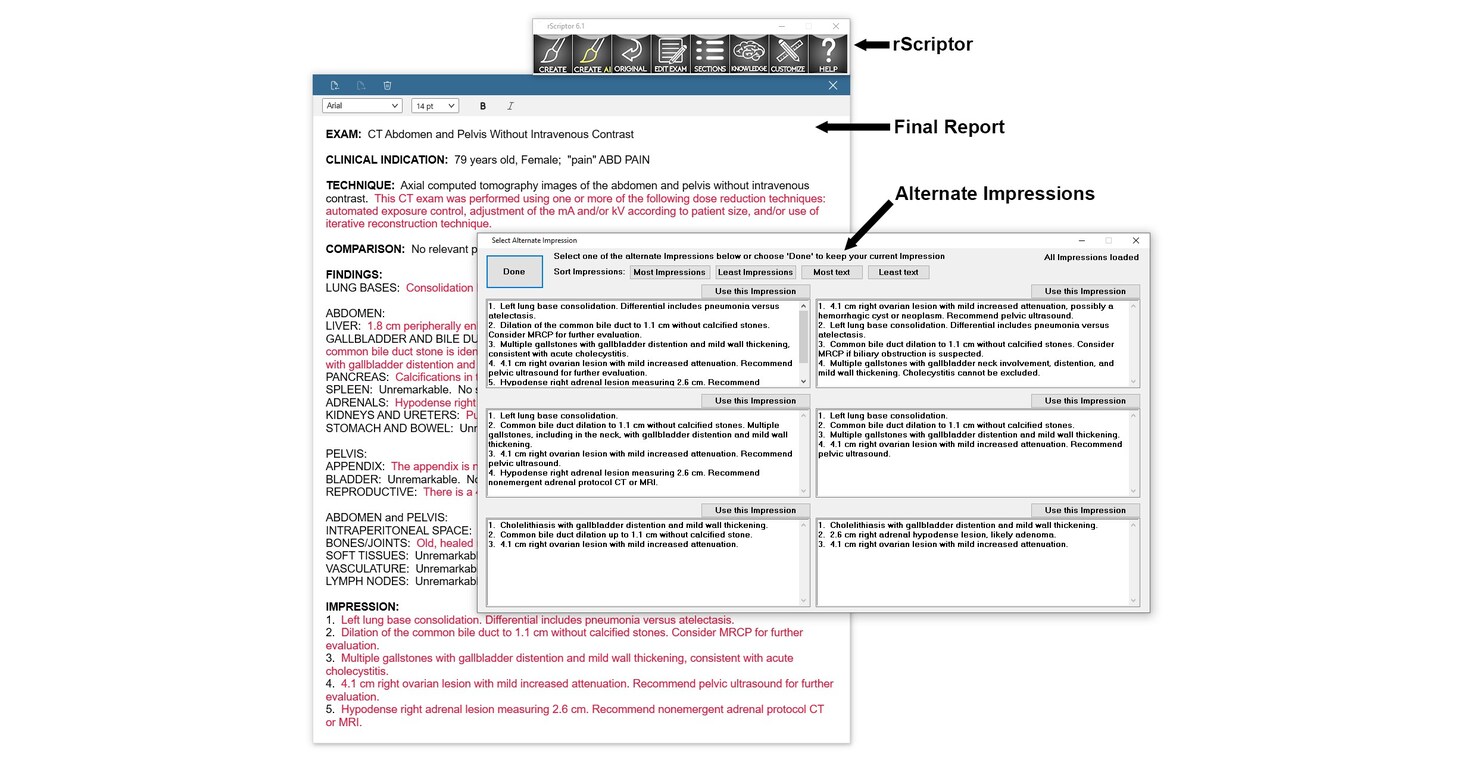The circular economy model represents a transformative approach to economic growth, focusing on sustainability, resource efficiency, and waste reduction. Unlike the traditional linear economy, which follows a “take-make-dispose” paradigm, the circular economy promotes practices that ensure resources are maintained in use for as long as possible. This paradigm shift is imperative as global challenges like resource depletion and climate change necessitate innovative solutions that foster environmental stewardship.
Key findings from this report indicate that the adoption of circular economy principles can positively influence market trends, as companies increasingly recognize the potential for cost savings through improved resource efficiency. By rethinking product design, manufacturing processes, and supply chain management, businesses can reduce material waste, lower production costs, and enhance their resilience against supply chain disruptions. Notably, the financial implications are significant; the shift to a circular economy could unlock trillions in economic benefits globally.
However, transitioning to a circular economy is not without challenges. Organizations face various risks, including regulatory hurdles, consumer acceptance issues, and the need for substantial investments in new processes and technologies. Conversely, there are ample opportunities for innovation and collaboration across sectors, paving the way for businesses to differentiate themselves and capture emerging markets focused on sustainability.
Moreover, the broader economic impacts of adopting a circular economy cannot be overstated. This approach not only fosters job creation and economic diversification but also enhances societal well-being through responsible consumption and reduced environmental footprints. Looking ahead, the future outlook for the circular economy is promising, with increasing awareness and support from policymakers, businesses, and consumers as they collectively strive for a sustainable, resource-efficient future.
Introduction to the Circular Economy
The circular economy represents a transformative shift away from the traditional linear economy model, which often follows a ‘take-make-dispose’ pattern. In contrast, the circular economy seeks to redefine this model by promoting sustainability through the continuous use and reuse of resources. This innovative approach emphasizes the importance of minimizing waste and enhancing resource efficiency across the entire production and consumption cycle. By rethinking how products are designed, utilized, and ultimately disposed of, businesses can significantly reduce their environmental footprint.
At the heart of the circular economy are several core principles. Waste minimization is a fundamental aspect, where the goal is not merely to reduce the amount of waste produced but to create systems that eliminate it altogether. Products are designed from the outset to be reused, repaired, or recycled, which fundamentally alters how resources are perceived and managed. This leads us to the next principle: resource efficiency. Properly implemented circular models allow for resources to be used in a closed loop, where they are retained within the system for as long as possible, thereby maximizing their value and reducing reliance on virgin materials.
This evolution towards the circular economy has been spurred by increasing awareness of environmental concerns and the unsustainable nature of linear economic practices. Climate change, resource depletion, and excessive waste generation have prompted both businesses and consumers to seek more sustainable alternatives. Consequently, as societies grapple with these challenges, the relevance of the circular economy continues to grow, providing a framework that not only addresses ecological issues but also promotes economic resilience and innovation. As more organizations recognize the benefits of aligning their operations with circular principles, the transition towards a sustainable future appears increasingly viable and necessary.
Current Market Trends in Circular Economy
The circular economy is gaining significant traction as industries adapt to a more sustainable model focused on resource efficiency and waste reduction. Current market trends indicate a robust growth in sectors that leverage circular economic principles such as recycling, leasing, and sharing economies. This transformation is largely driven by evolving consumer preferences, which increasingly favor sustainable practices, and regulatory changes that support eco-friendly initiatives.
Consumers are becoming more conscious of their environmental footprint, prompting a shift towards businesses that utilize circular economy principles. This shift is evidenced by the rise in demand for products made from recycled materials. According to a report from the Global Recycling Foundation, the global recycling market is expected to reach $377 billion by 2024, reflecting a significant increase in consumer investment in recycled goods. Companies are responding to this trend by incorporating recycled materials into their supply chains, which not only meets consumer demands but also reduces production costs.
Leasing and sharing economies form another notable facet of the circular economy. The rise of platforms that promote shared ownership—ranging from car-sharing services to rental clothing—illustrates a shift from traditional ownership models to more sustainable consumption patterns. Research from PwC reveals that the sharing economy could contribute approximately $335 billion to the global economy by 2025, indicating substantial growth potential. Businesses are increasingly adopting these models to enhance customer engagement and foster brand loyalty while minimizing resource extraction.
Moreover, regulatory changes are playing a pivotal role in shaping circular economy trends. Governments worldwide are instituting policies that encourage sustainable practices, such as extended producer responsibility (EPR) frameworks, which mandate that manufacturers assume responsibility for the lifecycle of their products. This regulatory support is vital for cultivating an ecosystem conducive to circular economic growth and innovation.
Financial Implications of Circular Economy Practices
The transition to circular economy practices holds significant financial implications for industries and companies. By adopting sustainable operational strategies, organizations can benefit from notable cost savings. These savings arise from various sources, including reduced material costs, lower waste disposal fees, and enhanced efficiency through resource optimization. Companies that integrate circular practices often observe a decrease in production costs as the focus shifts towards reusing and recycling materials, which mitigates dependence on raw materials that can be subject to volatile market prices.
In addition to cost savings, the circular economy presents opportunities for creating new revenue streams. Companies can leverage recycled materials and repurposed products to tap into burgeoning markets. Industries that embrace the circular model can also develop innovative services, such as product leasing and sharing platforms, generating continuous income while serving a growing consumer demand for sustainable options. This diversification allows businesses to remain competitive in an increasingly eco-conscious market landscape.
Investment opportunities emerge from the transition to circular practices as well. As investors become more focused on sustainability, there is a rising demand for enterprises that implement responsible business models. Organizations that prioritize sustainability in their operations are likely to attract more investment, as funds continue to flow towards initiatives aligned with environmental, social, and governance (ESG) criteria. However, the transition to circular economy practices also comes with potential financial barriers, including the initial costs associated with restructuring processes, technology investments, and employee training programs. Understanding these financial challenges is crucial for companies to devise strategic approaches that can facilitate a successful shift toward sustainability.
Ultimately, while the financial implications of embracing the circular economy can be complex, they also present an array of opportunities for industries looking to innovate and thrive in an evolving economic landscape.
Industry-Wide Impact of Circular Economy Initiatives
The circular economy represents a fundamental shift in how industries operate, moving from the traditional linear model of ‘take-make-dispose’ to a system that emphasizes sustainability and resource efficiency. Various sectors are experiencing significant effects as they adapt to circular economy initiatives. Manufacturing, fashion, and technology stand out as industries notably impacted by these practices.
In the manufacturing sector, companies are increasingly adopting circular principles by optimizing resource use and minimizing waste. For instance, manufacturers have begun to create products designed for longevity, repairability, and recyclability. This shift not only reduces the consumption of raw materials but also lowers production costs in the long run. Companies like Philips have advanced their circular economy initiatives by offering lighting-as-a-service—an innovative model where they maintain ownership of their products, thus prolonging the lifecycle and ensuring resources are reused efficiently.
The fashion industry, often criticized for its environmental footprint, is rapidly embracing circular economy strategies. Brands like Patagonia and Stella McCartney have pioneered initiatives focusing on sustainable materials and garment recycling. These companies highlight how integrating circular practices can foster brand loyalty among consumers increasingly concerned about sustainability. However, the transition presents challenges, including supply chain complexities and the need for consumer education.
In technology, the emphasis on circularity manifests in product design that facilitates repair and refurbishment. Tech giants like Apple are implementing trade-in programs and using recycled materials in their products, reinforcing a shift towards sustainability. However, the industry also faces hurdles, such as obsolescence and the demand for constant innovation, which can conflict with circular goals.
Overall, while the transition to a circular economy presents unique challenges across various industries, it also offers significant opportunities for innovation and efficiency. The ongoing adoption of these principles indicates a positive trajectory toward sustainable practices in the business landscape.
Broader Economic Implications
The transition to a circular economy represents a significant paradigm shift that has far-reaching economic implications. By prioritizing resource efficiency, waste reduction, and sustainable practices, businesses can enhance their competitiveness while contributing to broader economic resilience. One of the primary advantages of adopting circular principles is the potential for job creation. As sectors evolve to accommodate circular practices, new roles emerge in design, recycling, repair, and remanufacturing. This shift not only helps reduce unemployment rates but also fosters skilled labor, equipping workers with capabilities that are essential for a sustainable future.
Furthermore, embracing a circular economy can stimulate innovation in processes and products. Companies are encouraged to rethink their supply chains, leading to the development of new materials and technologies that minimize waste. This innovation not only drives growth within individual businesses but also has a ripple effect across the economy as it encourages investment and technological advancement in both established and startup companies. Such advancements contribute to enhanced productive capacity and efficiency, essential components of sustainable growth.
The interplay between circularity and global challenges like climate change and resource scarcity underscores the urgent need for this economic transformation. As natural resources become increasingly scarce and environmental degradation intensifies, the shift towards a circular economy enables societies to mitigate these risks effectively. By promoting renewable resources, reducing energy consumption, and shrinking carbon footprints, economies can better navigate climate-related challenges while establishing a more sustainable economic framework. Thus, the broader economic implications of the circular economy extend beyond immediate benefits, fostering a sustainable future that equips societies to thrive in an uncertain global landscape.
Risks and Opportunities in Embracing Circular Economy
The concept of the circular economy presents a range of potential risks and opportunities that organizations must navigate as they evolve their business models. On one hand, adopting a circular economy framework can pose significant challenges. For instance, technological limitations may restrict the ability of businesses to fully implement recycling or repurposing processes. The current infrastructure for certain materials might not support a seamless transition, leading to increased costs and operational disruptions as companies strive to meet new sustainability goals.
Moreover, market resistance can emerge from both consumers and retailers, often stemming from a lack of understanding of the benefits associated with circular practices. Customers accustomed to linear consumption patterns may be reluctant to shift to systems that prioritize sustainability over convenience. Retailers may also hesitate to invest in circular solutions if they perceive insufficient demand or fear they will alienate their existing customer base.
Regulatory hurdles further complicate the landscape. Governments are still in the process of developing comprehensive policies that support circular practices, resulting in a patchwork of regulations that can vary widely between regions. Companies may find themselves scrambling to keep up with compliance requirements, leading to additional costs and complexity in their operations.
Despite these challenges, the transition to a circular economy also presents a multitude of opportunities. Organizations that successfully embrace this model may gain a competitive edge by innovating new products and services that cater to environmental concerns. Furthermore, differentiation in the marketplace can be achieved by positioning products as sustainable alternatives, drawing in conscious consumers who value eco-friendly practices.
Ultimately, the risks associated with embracing a circular economy are significant but manageable. By addressing technological barriers, overcoming market resistance, and navigating regulatory challenges, businesses can unearth opportunities for growth and innovation in sustainability.
Expert Opinions and Insights
In the discourse surrounding the circular economy, varied opinions from industry leaders and experts add valuable depth to the conversation. Jack Smith, a leading sustainability strategist, asserts, “The circular economy is not just a trend; it’s an essential shift in how we perceive resource utilization. Companies must adapt to this model to foster longevity and resilience.” This perspective stresses the fact that embracing circularity can not only mitigate environmental impacts but can also offer a competitive edge in the marketplace.
Financial analysts have voiced differing opinions, particularly regarding the investment implications of transitioning to a circular economy. Laura Finch, a respected analyst at Green Investments, remarked, “Investing in circular economy initiatives may appear risky initially, but the long-term benefits far outweigh these concerns. The potential for cost savings and resource efficiency is immense.” This highlights an essential conversation about balancing short-term financial concerns with the long-term sustainability of enterprises within a circular economic framework.
On the operational side, Professor James Howard of the Sustainability Institute emphasizes the importance of education: “For a circular economy to truly flourish, comprehensive education and training are essential. Stakeholders must understand the interdependencies of systems and how to implement change effectively.” His view underscores the need for a well-informed workforce that is capable of navigating the complexities of sustainable practices.
Moreover, the experiences of businesses that have made the transition provide practical insights. Michelle Torres, CEO of EcoSolutions, shares her experience: “Transforming our business model to embrace circularity has not only improved our environmental footprint but also strengthened our customer loyalty. People are looking for brands that demonstrate a genuine commitment to sustainability.” This sentiment reinforces the idea that effective implementation of circular economy principles can lead to stronger market relationships.
Future Outlook and Implications
The future of the circular economy is poised to be dynamic, intertwining with global trends and technological advancements. As businesses and governments increasingly recognize the merits of sustainability, several key trends are expected to shape the circular economy landscape. The growing importance of environmental, social, and governance (ESG) criteria is influencing investment decisions, prompting companies to integrate circular practices into their operations to enhance brand reputation and attract conscientious consumers.
One significant trend to watch is the rise of regulatory frameworks aimed at promoting circular practices. Governments across the globe are implementing policies that encourage resource efficiency and waste reduction. Potential developments include stricter regulations on single-use plastics and incentives for companies that prioritize sustainable production processes. As these regulations evolve, they are likely to drive innovation within industries, compelling companies to rethink their manufacturing models and supply chains thoroughly.
Moreover, emerging technologies are anticipated to have a profound impact on the circular economy. Innovations such as digital twins, blockchain, and advanced recycling methods are expected to enhance material tracking, optimize waste management, and improve product lifecycle transparency. These technologies can facilitate the efficient use of resources and minimize waste, bolstering the principles of the circular economy. Additionally, advancements in materials science may lead to the development of biodegradable alternatives and innovative upcycling methods.
In conclusion, the circular economy is set to evolve in response to environmental imperatives and technological advancements. By monitoring regulatory shifts and embracing emerging technologies, companies can align themselves with this paradigm shift toward sustainability. As organizations adapt, the circular economy has the potential to redefine production and consumption patterns, fostering a more harmonious relationship between economic growth and environmental stewardship.
Bibliography and Citations
To lend credibility and transparency to this analysis of the circular economy, the following reputable sources have been consulted and cited throughout the report. Proper attribution is essential not only for academic integrity but also for fostering a robust understanding of the circular economy principles and practices. Below, readers will find a selection of pertinent literature that discusses the various dimensions of this economic model.
1. **Ellen MacArthur Foundation** (2019). *Completing the Picture: How the Circular Economy Tackles Climate Change*. This report highlights the intersection of circular economy practices and climate action, providing insights into how sustainable business models can contribute to reducing carbon emissions.
2. **Geissdoerfer, M., Savaget, P., Bocken, N. M. P., & Hultink, E. J.** (2018). *The Circular Economy – A new sustainability agenda for business and the environment*. *Journal of Cleaner Production*, 143, 757-768. This article outlines essential principles of the circular economy and discusses how businesses can integrate these concepts into their operations.
3. **Korhonen, J., Honkasalo, A., & Seppälä, J.** (2018). *Circular Economy: The Concept and its Limitations*. *Ecological Economics*, 143, 37-46. This publication critically evaluates the circular economy framework and its application in various sectors, offering a nuanced perspective on its potential and challenges.
4. **Material Economics** (2018). *The Circular Economy: A Powerful Force for Climate Mitigation*. This comprehensive study emphasizes the importance of circular systems in achieving sustainability goals while highlighting specific data and statistics relevant to the climate crisis.
5. **World Economic Forum** (2020). *The Future of the Circular Economy: A Global Perspective*. This report discusses global initiatives aimed at promoting circular economy practices, featuring case studies and insights from industry leaders.
By referencing these authoritative sources, the analysis not only provides a substantial foundation for understanding the circular economy but also invites readers to delve deeper into the subject matter for further exploration.






